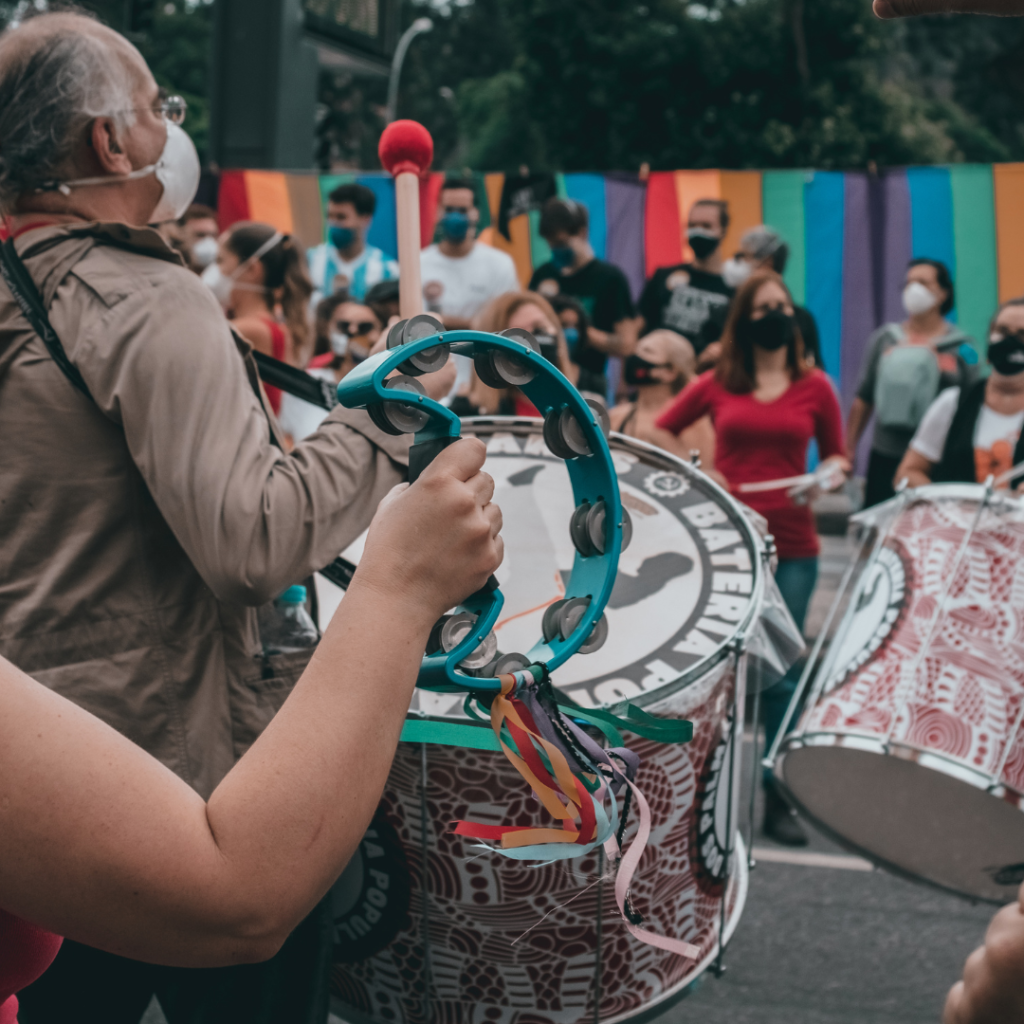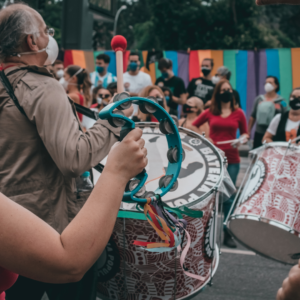Protest music has served as a powerful tool for activism and social change throughout history. From the civil rights movement to contemporary issues, musicians have used their art to voice dissent, raise awareness, and inspire action. This genre not only reflects societal struggles but also galvanizes communities to stand up against injustice.
In the 1960s, folk and rock artists like Bob Dylan and Joan Baez played pivotal roles in the anti-war movement, crafting songs that resonated deeply with those seeking change. Their lyrics encapsulated the frustrations of a generation, influencing public opinion and mobilizing supporters. As time progressed, genres evolved, but the essence of protest music remained rooted in the desire for justice and equality.
Today, protest music continues to adapt, incorporating diverse styles and digital platforms to amplify voices across the globe. Artists like Kendrick Lamar and Billie Eilish tackle issues from racial inequality to climate change, ensuring that the spirit of activism lives on. Throughout its evolution, protest music has proven to be an enduring force in shaping cultural dialogue and inspiring movements for a better future.
Historical Evolution of Protest Music
Protest music has evolved through various critical moments in history, reflecting societal struggles and the quest for justice. From the roots of slavery to modern conflicts, each era has produced powerful anthems that resonate with the oppressed.
Roots in Slavery and Spiritual Songs
The origins of protest music can be traced back to African American spirituals during slavery. These songs served as both a means of expression and a call for freedom. They communicated messages of hope, resilience, and solidarity.
Songs like “Swing Low, Sweet Chariot” held spiritual significance while also subtly conveying escape routes. The use of coded language allowed enslaved people to communicate their desires for liberation.
Negro spirituals laid the groundwork for future protest songs, intertwining faith with the fight for justice. This musical tradition cultivated a rich legacy that continued to inspire later movements.
The Civil War and Revolutionary Anthems
During the Civil War, music became a tool to bolster morale and convey ideals. Songs such as “Yankee Doodle” energized troops and civilians, fostering a sense of unity. These anthems often addressed themes of patriotism and sacrifice, reflecting the societal divisions of the time.
Both sides used music to promote their causes, with Union and Confederate songs providing insight into the national psyche. This period marked a significant expansion of protest music’s role in shaping public sentiment.
The revolutionary spirit of the individuals involved echoed in the melodies and lyrics, laying the foundation for future struggles. Music became an essential component of the fight for liberty.
The Civil Rights Movement and the Power of Song
The Civil Rights Movement prominently featured protest music as a means to inspire change. Songs like “We Shall Overcome” became anthems for the movement, symbolizing resilience in the face of adversity.
Artists such as Sam Cooke and Marvin Gaye crafted powerful songs that resonated with the struggles for equality. Cooke’s “A Change Is Gonna Come” articulated the yearning for social justice and hope. These songs not only united activists but also reached broader audiences, raising awareness.
Martin Luther King Jr. often incorporated music into his speeches, recognizing its emotional impact. The synergy of music and activism demonstrated how songs could galvanize support and foster a sense of community.
Anti-War Sentiments from Vietnam to Iraq
Protest music became especially poignant during the Vietnam War, with artists voicing dissent against U.S. involvement. Songs like “Fortunate Son” by Creedence Clearwater Revival captured the frustration of a generation.
The anti-war sentiment carried into later conflicts, including the Iraq War. Musicians continued to highlight the consequences of military actions, often critiquing governmental decisions.
This evolution demonstrated music’s role as a form of resistance. The emotional weight and societal relevance of these protest songs ensured their lasting impact. Through the decades, music remains a critical vehicle for expressing dissent and advocating for change.
Genres and Innovations
Protest music has evolved through various genres and innovations, reflecting the social and political climates of their times. From folk storytelling to hip-hop’s rhythmic expression, each genre has contributed unique elements to the protest music landscape.
Folk and Its Progenitors
Folk music has long been a platform for social commentary. Artists like Bob Dylan utilized traditional melodies and storytelling to convey messages of social justice and anti-war sentiments. The folk revival in the 1960s saw songs like “Blowin’ in the Wind” resonate deeply with listeners, as they addressed civil rights and peace.
Other influences include protest songs from earlier traditions, which highlighted struggles for freedom and equality. The simplicity of folk instruments allowed for widespread accessibility, empowering ordinary people to share their messages and experiences.
The Rise of Rock and Punk
Rock music emerged in the 1950s and 60s as a powerful means of cultural expression. With artists like The Beatles and Bob Marley, rock-infused social messages into mainstream music. Marley’s reggae blend addressed issues like racial injustice and colonialism, notably in tracks such as “Get Up, Stand Up.”
The 1970s punk movement introduced a rawer, more aggressive sound. Bands like the Sex Pistols and The Clash conveyed messages of rebellion against authority and societal norms. Their high-energy performances and confrontational lyrics became synonymous with protest, drawing attention to political disenfranchisement and economic struggles.
Rap and Hip-Hop as Vehicles of Protest
In the late 20th century, rap and hip-hop emerged as dominant forms of protest music. Artists like Public Enemy highlighted issues of racial inequality, systemic racism, and police brutality through their impactful lyrics and beats. Songs like “Fight the Power” became anthems for marginalized communities.
Hip-hop’s evolving nature allowed for diverse perspectives within the genre. Modern artists, including Beyoncé, have incorporated social issues into their work, addressing feminism and Black empowerment in songs like “Formation.” This genre has proven remarkably effective in mobilizing youth and fostering conversations about social change.
Cross-genre and International Influences
Protest music today thrives on cross-genre collaborations and global influences. Artists blend styles, such as integrating folk elements into hip-hop or punk rock into reggae. This fusion allows for a richer expression of resistance.
International artists also contribute to this movement. Musicians from diverse backgrounds, such as Latin American or African traditions, incorporate political themes into their work. The global nature of protest music underscores shared struggles for justice and human rights, uniting movements across continents.
Iconic Songs and Artists
Protest music has played a significant role in amplifying voices against social injustice and war. The contributions of various artists have created anthems that resonate deeply across generations.
The Anthems of Freedom and Justice
Billie Holiday’s “Strange Fruit” is a poignant expression of racial violence in America. Released in 1939, its haunting lyrics confront the brutal reality of lynching. Another classic, Sam Cooke’s “A Change Is Gonna Come,” emerged during the Civil Rights Movement, capturing the spirit of hope and perseverance in the face of oppression.
Joan Baez and Pete Seeger also significantly shaped the genre with songs that promoted peace and civil rights. Baez’s performances often highlighted pivotal social issues, while Seeger’s rendition of “This Land Is Your Land” became a rallying cry for the grassroots movement. These songs remain powerful reminders of the struggles for freedom.
Voices Against Racism and Racial Inequality
Nina Simone’s “Mississippi Goddam” directly addressed racial violence and the struggles of African Americans during the 1960s. Its raw and urgent plea demands attention to the injustices faced by Black communities. Similarly, Marvin Gaye’s “What’s Going On” explores themes of love and social unrest, blending personal and political narratives that resonate even today.
Bob Dylan’s “Blowin’ in the Wind” poses rhetorical questions about peace, freedom, and justice, encouraging listeners to reflect on the state of the world. Both Barry McGuire’s “Eve of Destruction” and Country Joe McDonald’s “I-Feel-Like-I’m-Fixin’-to-Die Rag” critique the Vietnam War, highlighting the disillusionment among youth during that tumultuous era. These artists have significantly influenced the discourse on racism and injustice.
Champions of Peace and World Affairs
Protest music extends beyond civil rights into broader issues of global conflict and peace. Joan Baez and Bob Dylan often used their platforms to advocate against war. Dylan’s “Blowin’ in the Wind” became an anthem for the anti-war movement, while Baez’s performances raised awareness about various global issues.
Pete Seeger’s “Where Have All the Flowers Gone?” reflects the futility of war and has been covered by numerous artists, emphasizing its timeless message. These songs have inspired activism, urging listeners to engage in conversations about peace and the human condition, making a lasting impact on society.





